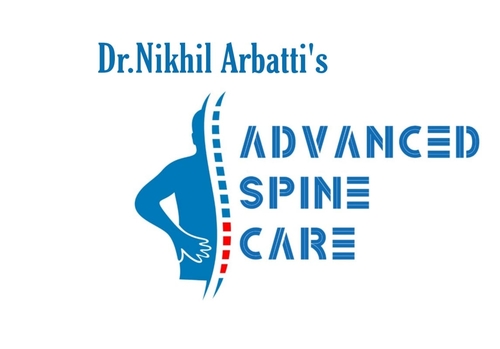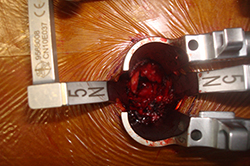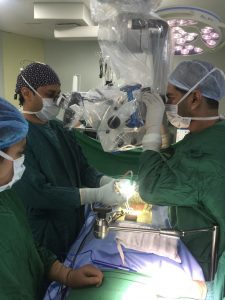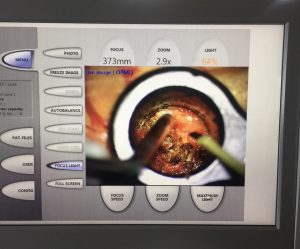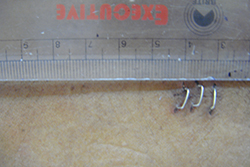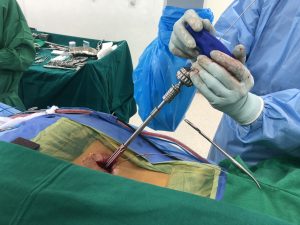LUMBAR SPINE SURGERIES
Micro Decompression & Discectomy
We Use A microscope or High end loupes to perform all our Spinal surgeries.
This not only helps in better magnified visualization but also reduces the chances of complications and improves surgical outcomes. Micro Lumbar Decompression/ Discectomy is usually done for Lumbar Disc Prolapses or Stenosis, where there is no added Instability, thus a Decompression of the affected nerve root achieves the desired Result, through a small incision.
Tubular Decompression/Discectomy
The innovation of rigid and expandable tubes helped in further progressing the boundaries of microscopic surgery to purely Minimally Invasive Spine Surgery (MISS).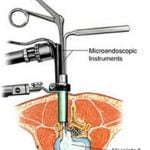
These tubes are instruments through which the spine surgery can be performed, and the surgeon doesn’t require any assistant . They are passed through the skin in sequential order to dilate the muscles without cutting them.
The benefit of these tubes are that they don’t cut any muscles, so not much bleeding, also less muscle damage means less pain postoperatively.
The size of the skin incision is less than 1 inch in length,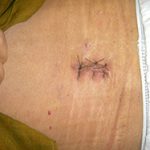 this is 50% more smaller than a routine open spine surgery. Even through this small incision, we use high end microscopes/loupes to see better and magnified through the tubes. This helps us in performing the entire surgery safely and without any major complications.
this is 50% more smaller than a routine open spine surgery. Even through this small incision, we use high end microscopes/loupes to see better and magnified through the tubes. This helps us in performing the entire surgery safely and without any major complications.
After a tubular endoscopic discectomy or decompression the patient is comfortable soon enough and can made to stand and walk as early as 6-8 hrs after the surgery.
Patients are usually discharged the next day after surgery, and can resume light work, as soon as 3-4 weeks after the surgery, like going to office and performing desk jobs.
Endoscopic Discectomy / Decompression
Endoscopic Spine Surgery is the next generation of Spinal Surgery, started back in 1988, it has gained prominence in the last 10 years.
In fact more and more Newer Generation Spinal surgeons all over the world are opting for this technique to perform majority of their Spinal Discectomies and Decompressions.
This procedure involves using scopes ( small rigid tubes ) like in laparoscopic surgery, through this tube we get visualization, irrigation to get clear field and another hole for passing instruments to perform the procedure.
The entire procedure is seen on the screen and the patient is usually awake during the procedure.
The benefits of this approach are :
- No normal structures are damaged.
- Minimal or negligible bleeding.
- Surgeries can be done without anesthesia, only under sedation and local anesthesia.
- Can be done for Older Population in whom any kind of anaesthesia can be a risk to the individual.
- Since Usually no Anesthesia is given, The patients are awake during the surgery are conversing with the surgeon and can tell for an immediate improvement after the surgery.
- Patients are mobilized immediately after the surgery and can be discharged once they are comfortable mostly the same day of the surgery.
Minimally Invasive Spinal Instrumentation:
Spinal surgery has evolved to where we now regularly, need to put in implants like screws, plates and spacers for some spinal conditions.
In fact almost 60-70% of spinal surgeries are done with the use of Implants, these Implants are made of titanium or Peek material and are Bio-compatible. Once inserted they can remain in the persons body for a long time, and need not be removed unless indicated.
Previously for Inserting screws, rods and spacers in the lower back, it would require a big incision with lot of muscle dissection , this would lead to significant pain and period of immobilisation post surgery.
Thus instrumentation surgeries were either avoided or were done in patients who would not be actively working or were not involved in manual labour.
As times change, spinal issues are affecting a wide range of population from age of 15-95, and many require implants or screws to be put in. Thus we have now evolved to the Minimally Invasive way of instrumentation (MISS).
Nowadays we do majority of Spinal Instrumentation surgery’s with a Minimally invasive approach, we make small holes in the skin, through these holes the screws, rods and spacers are inserted under X-ray/navigation guidance, this way it is more accurate and less morbid for the patient.
So we can perform this surgery for all ages, without major complications.
The patient is benefitted in that he is able to resume all his normal activities very soon after such an extensive surgery, as the post operative morbidity and pain is very less.

